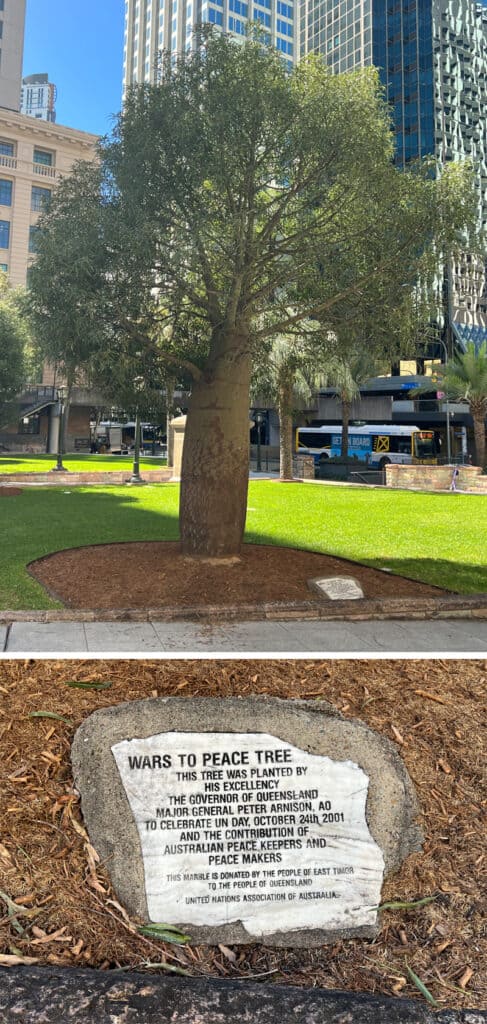ANZAC Square, Queensland’s State War Memorial, is a focal and permanent reminder of those who fought, died and suffered in service of Australia. Located in the heart of Brisbane’s CBD, it was borne from a grieving society, which had given and lost so much during the First World War.
Originally envisaged as solely a WWI memorial, ANZAC Square now serves as a memorial for all conflicts and peacekeeping from the Boer War to present and is an important gathering place to commemorate significant events, including ANZAC Day and Remembrance Day.
Construction of the ANZAC Square Memorial occurred between 1929 and 1930. The first event was held at Anzac Square on 24 May 1930, when a bronze commemorative tablet was unveiled by the Governor Sir John Goodwin and was attended by around 1000 people, including returned soldiers. At this stage Anzac Square was only partially completed, with construction continuing until late October that year.
Three paths enter ANZAC Square from Elizabeth Street, each one dedicated to a branch of the Australian Armed Forces. These are arranged with the Army path in the centre, Air Force to the south east and Navy to the south.
 |  |
Right: ANZAC Square, Jack Bain, ca 1930
Images source: QUT Digital Collection
Flanking these pathways and distributed throughout the park are several commemorative trees , planted as living memorials and relate to different wartime campaigns.
The original Bribie Island or White Cypress pines (Callitris columellaris), planted in the 1930s, no longer remain.
This image was captured from one of several interpretive panels, mounted on the wall of an underground walkway near ANZAC Square. The panels reveal the history of Brisbane.
The caption reads:
“Charlie Stanton standing beside the cypress pine he planted in Anzac Square, June 1931. Stanton was the mascot drum major of the Young Australia League Boys’ Band“


The Queensland Bottle trees (Brachychiton rupestris) were planted to commemorate the six contingents of the Queensland Light Horse regiments who went to the South African (Boer) War (1899 – 1902).
 |  |
 |  |
Although six bottle trees stand in the square today, three are actually replacement trees – one in the middle of the walkway was replaced in the 1970s; a second was replaced in the 1980s with a tree donated from private land at Wynnum; and a third replacement tree from Roma was planted in recent years.
Palm trees (Phoenix dactylifera) are planted to acknowledge service in the Middle East.
Representing peace, sentinel rows of Araucaria spp. flank special bronze screens, installed on opposing sides of the park, during 2019. These screens list 2,075 Queensland towns that servicemen and women left, to fight in battles during WW1 and WW2.

This Queensland Bottle tree (Brachychiton rupestris), is dedicated as the “Wars to Peace” tree.
Planted by His Excellency The Governor of Queensland to mark United Nations Day on 24th October 2001 and to commemorate Australian Peace Keepers and Peace Makers.
The ANZAC Square parklands, features the imposing Shrine of Remembrance. Inside the heart of the Shrine, the Eternal Flame burns in a bronze urn, as an everlasting reminder of those who died in their wartime service to Queensland.
 |  |
ANZAC Square is now dedicated to the men and women who have served their country in conflict and in peace, since the 1899 Boer War. It provides a space to reflect, grieve and remember loved ones and those who have made the ultimate sacrifice.


